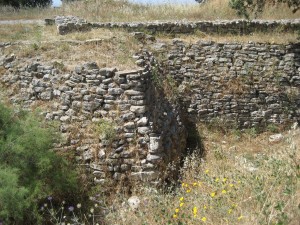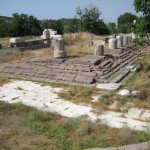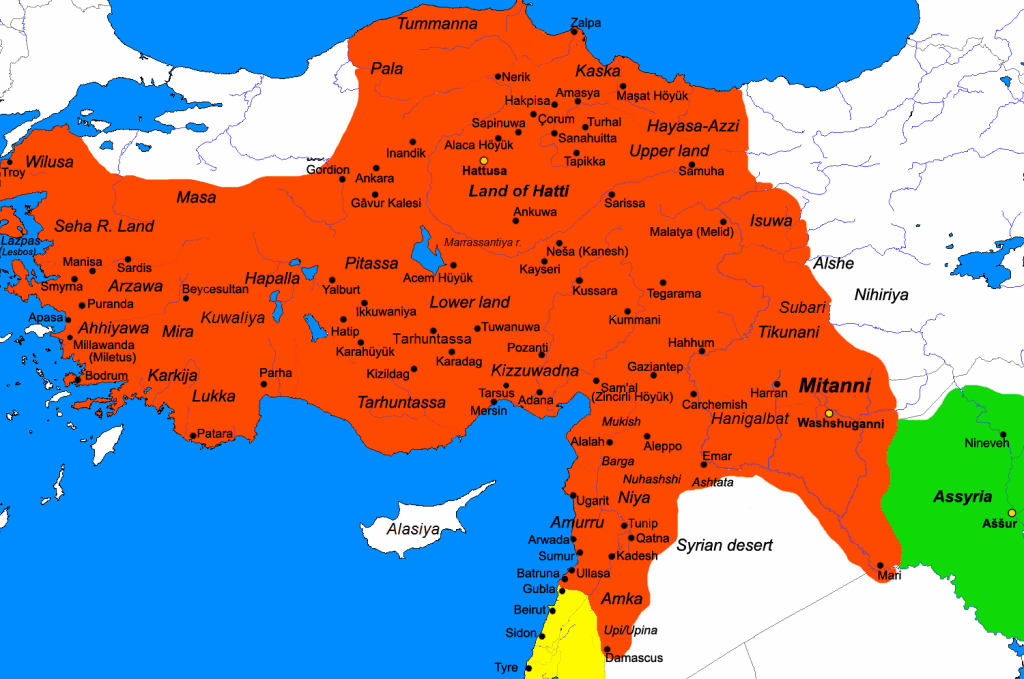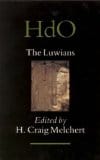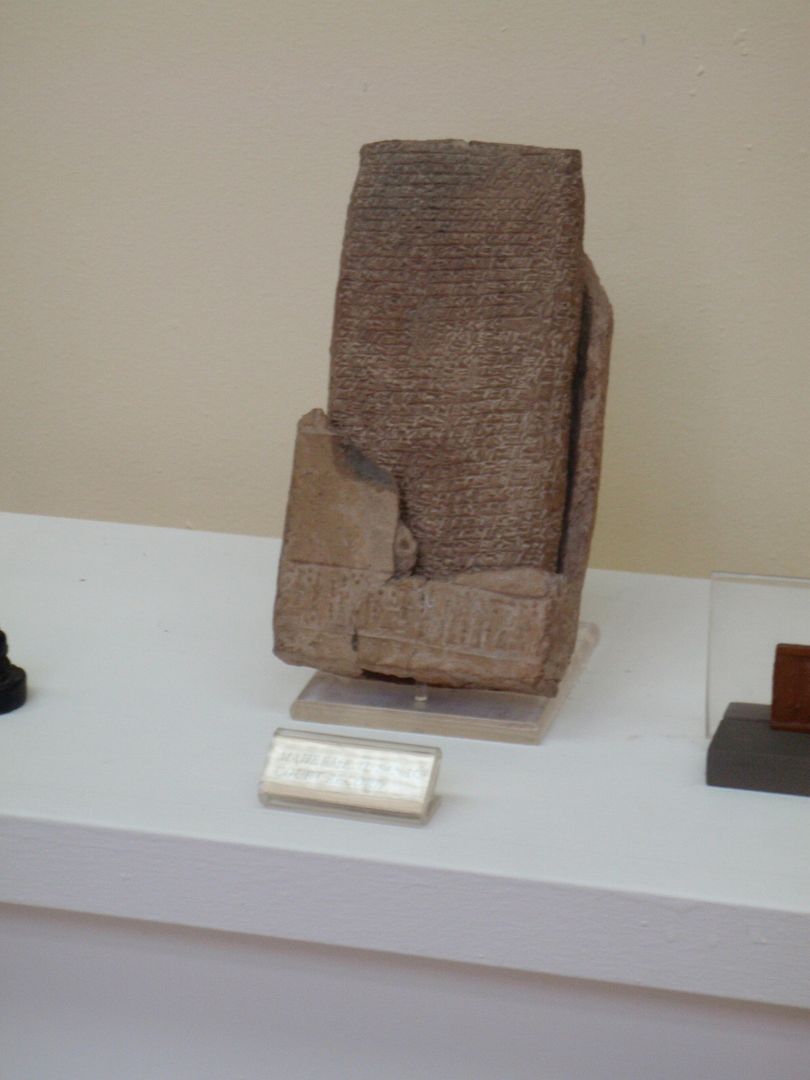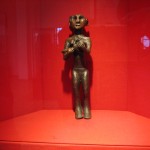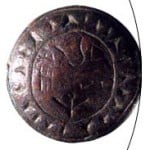You may wish to read the introduction of this series Trojan Women: Women's Roles in Ancient Anatolia and Mycenaean Greece or Part I What Hittite and Mycenaean Women "Did" or Part II A Woman's View From the Top: Hittite and Mycenaean Queens or Part III The Hittite Hasawa: Priestess, Therapist, Healer, Diviner, and Midwife
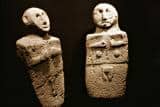 |
| Man and woman from an exhibit in Istanbul, prehistoric statuettes (photo by Dick Osseman) |
The Hittite law codes offer more protection for a woman than, if I’m remembering correctly, Victorian England, in the sense that a Hittite woman could both initiate a divorce and keep her inheritance and half her husband’s estate if she divorced. On the other hand, the expressions used in Hittite for marriage—there is no one abstract word for “to marry”—reflect the control men exercised over women, “to take a wife” “to take as his own wife” “to make her your wife.” (Imparati, 572) A woman is never described as “taking a husband.” The laws of adultery and rape present a similarly mixed bag.
Generally, a woman’s marriage was arranged by her parents. The woman’s own agreement to the marriage does not seem to have been required. (Imparati, 572-573) Early on in a girl’s life she might be promised to a particular boy/man. From this stage of “promise,” she was “bound” in the second stage of marriage by the first of two financial transactions. Her groom’s family paid a substantial sum (more or less, depending on the family’s wealth) in the form of a kušata or “bride price”. Then to seal the marriage contract, a woman brought to the deal an iwaru, which literally means “gift” and scholars translate as “dowry.” In this practice the Hittites acted as did other Near Eastern cultures. Unfortunately, no marriage contracts have surfaced yet in Hittite archaeology so we do not know exactly what kinds of arrangements they specified, although we know they must have existed and would had various reciprocal obligations between spouses and have been validated by witnesses and a seal. (Imparati, 573)
 |
| Necklace with gold and cornelian beads such as would be included in dowries, Cypriot with Mycenaean influence, ca. 1400-1200 BC, in the British Museum |
A woman usually went to live in her husband’s house, although Hittite law provides for a kind of adoption of the husband into the wife’s family when his family was too poor to provide a kušata. Since the children of a free man were free, a wealthy slave (yes they did exist a great deal in the ancient world) could thus acquire freedom for his grandchildren through such an adoption/marriage.
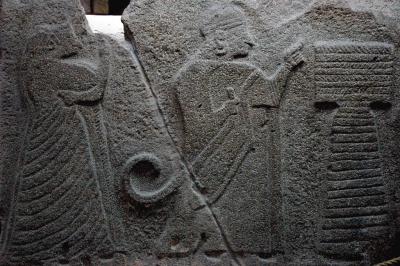 |
| Hittite King and Queen making an offering to the Stormgod (photo by Dick Osseman) |
Monogamy appears to have been far and away the most common state of marriage. The only regularly polygamous marriages we hear about are in the case of the Hittite king. His first wife had a special status with the others as a species of concubine.
Since the Hittite king required prodigious numbers of offspring, both male and female, to govern and militarily protect the empire, as well as to form alliances with other kingdoms, his polygamous marriage status appears to have been a special case for the most part. For those of you who remember that in the Iliad, Priam, the King of Troy, had fifty sons and fifty daughters, this will sound vaguely familiar. In the Iliad, Priam also seems to have only one queen, Hecuba, and she certainly didn’t give birth to one hundred children, so this kind of acceptance of concubine’s children as members of the royal family seems to be reflected in the epic tradition.
Hittites adopted a “liberal and pragmatic approach to the institution of marriage” (Bryce, 119). “Divorce was apparently not uncommon, and divorce proceedings could as easily be initiated by a woman as by a man” (Bryce, 119). “It seems that in a divorce between persons of equal status, the couple’s assets were generally divided equally and all the children but one remained with the mother; if the wife was of lesser social status [slave/free], the husband retained the custody of all but one of the couple’s children” (Collins, 24). In addition to the equitable division of assets, the wife had another sizable financial advantage in the case of divorce: She retained both the kušata and the iwaru. Her dowry represented her share of her father’s estate and remained her property throughout her married life and divorce. While married, her husband acted as custodian of the dowry, but it only became his if she died before him, and in this case, it appears it passed to the children, as in Babylonian law. (Bryce, 130)
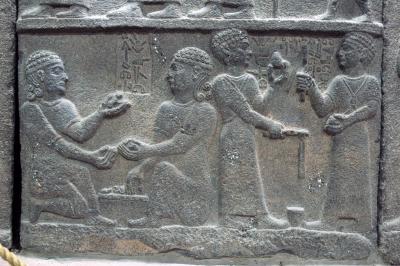 |
| Stone relief of children playing (Carcemish 8th century BC) (Photo by Dick Osseman) |
There were also provisions that a widow be adequately provided for after her husband’s death. Among other things, she had the legal right to disinherit her sons if they failed to take care of her. (Bryce, 132)
There are two key law codes to consider regarding rape and adultery, which in the Hittite mind, appear to be closely tied ideas. Here are the relevant codes:
Clause 197 “The Laws” If a man seizes a woman in the mountains (and rapes her), the man is guilty and shall die, but if he seizes her in her house, the woman is guilty and shall die. If the woman’s husband catches them (in the act) and kills them, he has committed no offence.
 |
| Reconstructed walls of Hittite palace at Hattusa (Copyright Rita1234, Wikimedia Commons) |
Clause 198 “The Laws” If he (the husband) brings them to the palace gate [the royal court] and says: “My wife shall not die,” he can spare his wife’s life, but must also spare the lover. Then he may veil her [his wife]. But if he says, “Both of you shall die”, and they “roll the wheel”. The king may have them both killed or he may spare them. (Hughes, 190)
In Clause 197, if the sexual encounter occurs in an isolated place where the woman could not call out for help, it is assumed that it is rape and the man is guilty and the penalty is death (Imparati, 574). If, on the other hand, the sexual encounter occurs in the woman’s house (it is probably good not to take these exemplar places too literally), then the law assumes she was committing adultery, not being raped, and for that, she pays with her life.
 |
| The Lion Gate of Hittite palace at Hattusa (Copyright User_China_Crisis, Wikimedia Commons) |
The husband, if he catches a man with his wife, is justified under Hittite law in killing them, but only in the heat of the moment. Clause 198 indicates that if he stops to think about it, he must bring the two before the king for the court’s decision. Interestingly, he cannot request that only one of the adulterers be killed. It’s an all or nothing decision. The king can override the angry husband’s decision and spare both.
As I said, Hittite law is a mixed bag as far as women’s rights. Certainly rapists paid a high penalty for their crime, but we cringe at the idea of defining rape by location. In addition, a married man could have sex with another woman without it being counted as adultery as long as the woman was not married. That is, only a woman was bound in marriage to the one sexual partner. Clearly the Hittites operated under a “double standard” like so many other cultures through time.
Bibliography for this article:
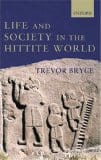 |
Bryce, Trevor. Life and Society in the Hittite World. Oxford: Oxford University Press, 2002.
 |
Collins, Billie Jean. The Hittites and Their World. Atlanta: Society of Biblical Literature, 2007

| Hughes, Bettany. Helen of Troy. New York: Knopf, 2005. |
 |
Imparati, Fiorella. “Private Life Among the Hittites.” In Civilizations of the Ancient Near East, edited by J.M. Sasson, K. Rubison, J. Baines, 571-585. New York: Scribner’s, 1995.
***
We welcome Judith back to this blog to continue this fascinating series of articles. Judith is a novelist and book reviewer who sets her
historical fiction and mysteries in the period of the Trojan War and the
Hittite Empire. She blogs on these and other topics, as well as
reviewing books, here. She can also be found on Twitter and on Facebook.
Thank you again, Judith, for this look at women in the
ancient world. And readers, we'll have one final post in this series
coming soon.
 |
| Judith Starkston |

